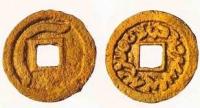Вы здесь
Yilan-Karaul ancient settlement.

Book local tours in Kazakhstan.
“The Arabs say right, here I am with them:
It is not criminal to drink wine at the time of spring flowering;
To make friends with the young peri from Halluha now -
So that she, like the Chinsky idol, caressed her eyes with beauty,
To enter the gait languid in our hoppy, cheerful circle,
To draw on the glasses: “Are you, daredevil, a welcome friend?”
Bade Balkhi, translated by D. Vinogradov.
Take Tours Kazakhstan.
Yilan-Karaul (kaz. Zhylankarauyl) is a medieval settlement on the territory of the Sozak district of the Turkestan region of Kazakhstan. In the literature, the name Kultobe (kaz. Kүltөbe) is also found. The name Yilan-Karaul in Russian sources can be transcribed as Zhylankarauyl, Zhylan Karauyl or Zhylan Karaul.
The fortification of Yilan-Karaul is mentioned in historical sources of the XV - XVIII centuries. According to reports, in 1582, during the conflict with the Bukhara Khanate, the fortress was destroyed by the Sheibanid army under the command of Ibadullah Sultan.
However, the city was finally abandoned only in the XVIII century. To date, two streets have been excavated in the northwestern part of the settlement. The area of the investigated territory is about 2000 square meters.
The hillfort is located on a low hill. The shape of the hill in the plan is an oval with dimensions of 180 × 135 m, height - 3 - 6 m. On the edges of the settlement there is a stone wall about 1 m wide, which is adjacent to residential buildings.
Around the central ruins are separate estates and buildings. The buildings were constructed of stone and raw brick. Residential buildings were located along the streets, overlooking them with dull facades. The number of rooms in the houses varies from one to four.
The interior of the premises is the same. Most of them are occupied by the sufa - a small elevation into which the tandoor is deepened. The tandoor is equipped with a short chimney, laid under the sufa and connected to a vertical chimney well in the wall. In the utility rooms, food bins were arranged.
Each house had a bathing room, which indicates the development of Islamic culture. During the excavation, a large collection of ceramics, bone and stone products was collected. On pottery generic tamgas are depicted.
Housewares are similar to items found in the cities of Turkestan, Otrar, Suzak, which indicates the cultural and commercial ties of Yilan-Karaul with these cities.
Authority:
https://ru.wikipedia.org







